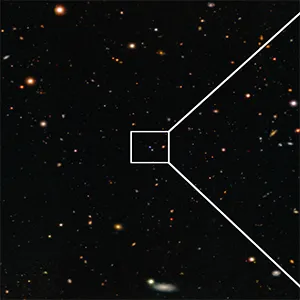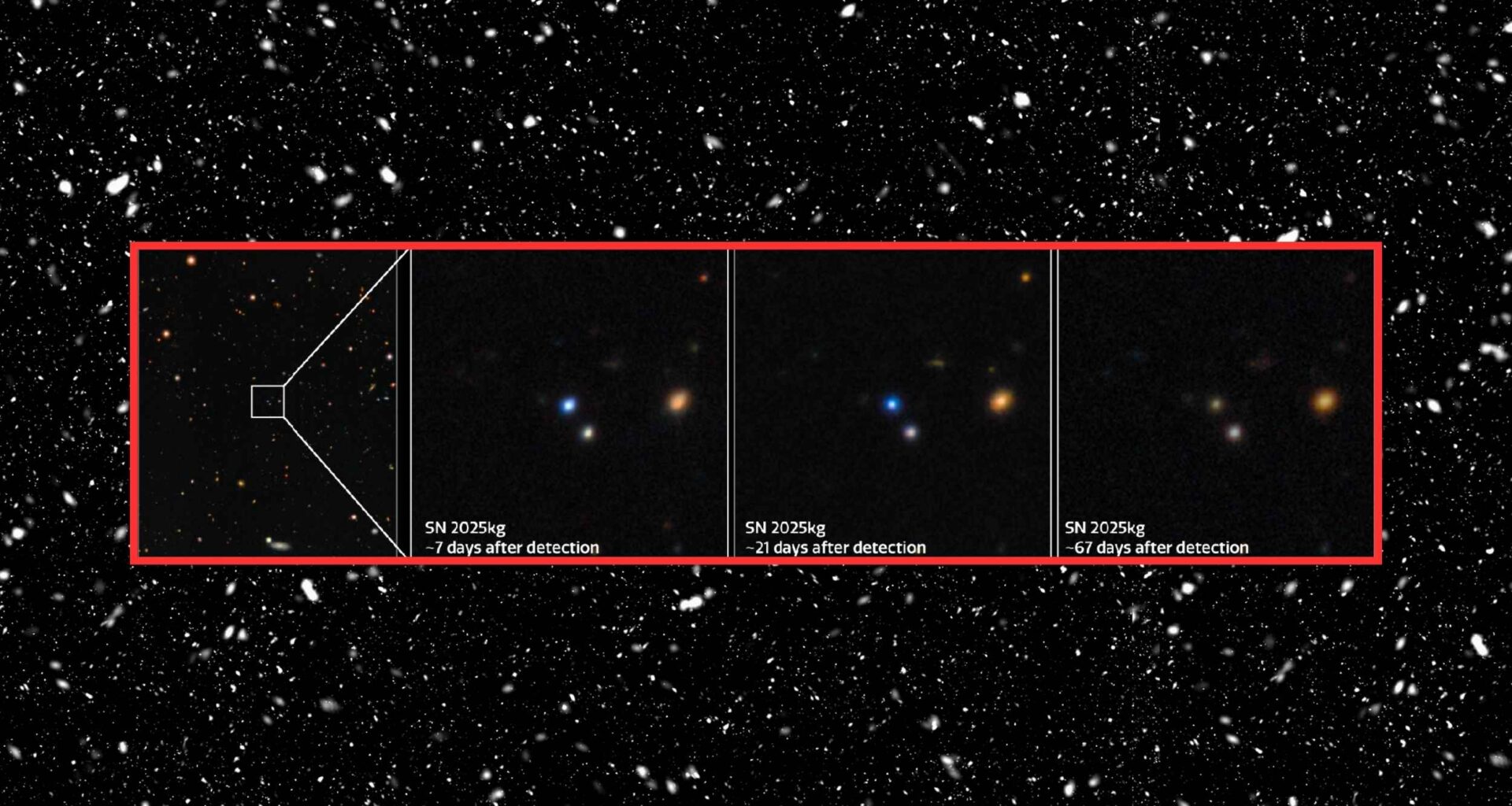Massive stars don’t die quietly. Their cores collapse, shockwaves race outward, and the dying stars light up the sky across many forms of light.
Sometimes these endings start with a sudden blast of X-rays, a type of high-energy radiation released by extreme cosmic events, that lasts seconds to hours.
Astronomers call this a fast X-ray transient (FXT), a short-lived flash of X-rays that suddenly appears and then fades away, and the latest case has helped reveal what happens deep inside a star right as it dies.
What is an FXT?
These brief flashes turn on and off quickly, which makes them hard to catch. The Einstein Probe mission, a space telescope launched by China’s National Space Administration to monitor high-energy cosmic events, scans the soft X-ray sky for exactly these events so rapid follow up can begin.
FXTs were once mostly found after the fact in old data, so details of their rise and fall were often missing. Real time alerts now let teams watch the full story from the first moments.
Researchers also want to know how FXTs relate to the more famous gamma-ray burst, an intense jet of radiation released when a massive star collapses or two neutron stars merge.
GRBs show powerful jets and sometimes they are followed by a supernova, but the connection to FXTs has been unclear.
Nearby FXT with a twist
On January 8, 2025, the Wide-field X-ray Telescope (WXT), a wide-view detector aboard Einstein Probe, spotted an FXT labeled EP 250108a. That alert triggered a worldwide follow up effort within hours.
Observers then found an optical counterpart at the same location, the supernova SN 2025kg. Its relative closeness compared with past cases meant astronomers could watch fine details unfold.
The X-rays brightened for roughly 40 minutes and then faded, a classic fast transient profile. The behavior suggested a sudden release of energy from deep within a collapsing star.
From the beginning, the team suspected a jet-driven explosion, an event where high-speed streams of matter shoot outward from a star’s collapsing core. The twist was that the jet might have stalled inside the star rather than breaking free into space.
How telescopes unraveled the story
During the first six days, the team measured how the light changed with time and secured the redshift, a stretching of light to longer wavelengths caused by the expansion of the universe, of 0.17641.
Those early data are crucial for identifying the mechanism that powers the flash.
“We find that the source is well-modelled by a rapidly expanding cooling blackbody, a simple model that describes how a hot, dense object emits light as it cools,” wrote Rob A. J. Eyles-Ferris of the University of Leicester (UL).
The observing campaign used Gemini South’s near-infrared camera, FLAMINGOS-2, Gemini North’s GMOS spectrograph, the VLT’s X-shooter, Swift Observatory, and other facilities.
Together, these instruments traced the shift from an X-ray bright source to a clear supernova.
The combined picture points to a hot cocoon, a bubble of shocked material surrounding the jet, created when a jet fails to escape the star.
As that cocoon expanded and cooled, it produced the early optical glow while the trapped jet powered the fast X-rays.
Trapped jets change the playbook
When a jet breaks out, the explosion can produce a long-duration GRB and very energetic gamma rays. In this event the evidence indicates the jet was weak or smothered by dense layers, so no bright gamma rays were seen.
This suggests trapped jets could be more common than previously thought, wrote Eyles-Ferris. That possibility widens the link between FXTs and the deaths of many massive stars.
It also explains why FXTs can look different from GRBs even when they come from similar kinds of stars. The outcome depends on whether the jet breaks through the star or stalls inside it.
With more examples, researchers can map which stellar conditions produce successful jets and which produce trapped ones. Rotation, mass, and the immediate environment likely all play roles.
 This sequence of images shows the fading light of the supernova SN 2025kg, which followed the fast X-ray transient EP 250108a, a powerful blast of X-rays that was detected by Einstein Probe (EP) in early 2025. Click image to enlarge. Credit: Gemini Observatory/NOIRLab/NSF/AURAWhat the supernova tells us
This sequence of images shows the fading light of the supernova SN 2025kg, which followed the fast X-ray transient EP 250108a, a powerful blast of X-rays that was detected by Einstein Probe (EP) in early 2025. Click image to enlarge. Credit: Gemini Observatory/NOIRLab/NSF/AURAWhat the supernova tells us
SN 2025kg shows the hallmarks of a Type Ic broad-lined supernova, a rare kind of explosion from a massive star that has lost both its hydrogen and helium layers.
Modeling points to a progenitor with about 15 to 30 times the mass of the Sun in a companion paper. This class lacks hydrogen and helium in its spectra, which means the star lost those outer layers before it collapsed.
The same analysis compares SN 2025kg to well-studied GRB supernovae and other FXT supernovae. The similarities support the trapped or low energy jet picture and set a baseline for future cases.
Together, these details connect the early X-ray behavior, the optical rise, and the later spectral changes into a single story. The data set shows how a stalled jet and a cooling cocoon can shape what we see across different wavelengths.
Supernovae, FXTs, and the future
The decade-long Legacy Survey of Space and Time (LSST), a project that will image the southern sky every few nights from the Vera C. Rubin Observatory, will make regular, deep images of the southern sky.
That cadence will capture the optical rise of many nearby supernovae tied to FXTs and flag them for rapid spectroscopy.
Einstein Probe will continue to catch the X-ray sparks that start the story. Telescopes like Gemini and SOAR will then fill in the spectra and light curves that test the trapped jet idea.
As the sample grows, astronomers can measure how often weak or smothered jets appear compared with the classic breakout case. That ratio will tell us which fates are most common for the largest stars.
These coordinated observations are turning rare flashes into a reliable way to study how massive stars end. Each new event adds a clean piece to the puzzle of how a collapsing core, a jet, and a star’s final layers interact.
—–
Like what you read? Subscribe to our newsletter for engaging articles, exclusive content, and the latest updates.
Check us out on EarthSnap, a free app brought to you by Eric Ralls and Earth.com.
—–


